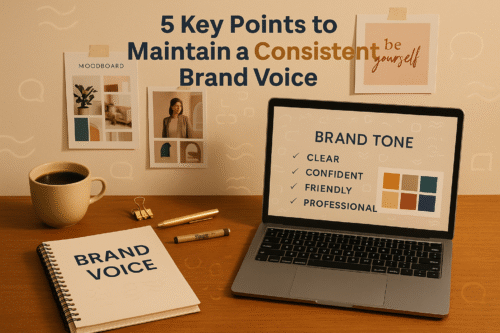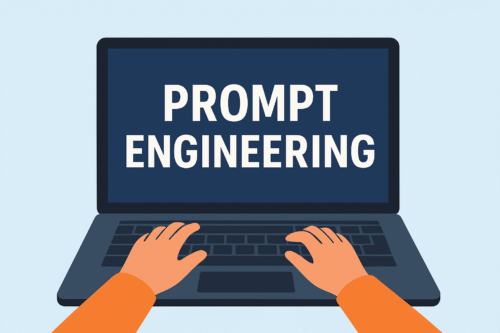Creative strategy has always been the soul of advertising. Writers crafted emotional stories, designers produced unique visuals, and editors worked hard to piece together engaging videos.
But over the last few years, artificial intelligence has stepped into the creative scene, not to take over, but to team up. It’s making work faster, opening doors to fresh ideas, and helping companies make content that feels personal.
In India, as digital marketing grows quickly, companies need quality work done fast. This is where AI offers a real advantage in creative projects.
Let’s explore how AI is changing the future of creative strategies, from content writing to design and video creation.
1. Creativity Has Entered a New Phase
Every creative job starts with an idea. Teams used to spend a lot of time thinking and looking things up before they even got going. Now, artificial intelligence can help marketers get started faster. Tasks like creating concepts, choosing visual styles, or writing content can all begin with a simple request. But the real magic happens when people refine and improve what AI produces.
AI offers speed, data, and many options. People bring emotions, cultural understanding, humor, storytelling, and gut feelings. Together, this forms a powerful new creative force.
2. AI Is Changing How Content Is Created
Content used to be a fully manual process. Now, artificial intelligence helps writers create content faster while keeping their own style. Writers can now get ideas for outlines, headlines, ads, product descriptions, and scripts fast. This doesn’t mean original work isn’t needed, but it makes starting projects easier and helps when you’re stuck.
For businesses in India, it’s helpful to quickly change content into different local languages. Now, a single idea can become Hindi, Gujarati, Tamil, or Marathi versions without repeating work. This saves time and allows businesses to engage with more audiences throughout India.
Artificial intelligence also makes it easier to make content that speaks to each person. Content can change its style and suggestions to fit what someone likes or has been interested in before. It used to be hard to make stories fit what many readers want before artificial intelligence became available.
3. The Design World Is Experiencing a Massive Shift
In the past, design work could take forever. Think about all the time spent on layouts, colors, fonts, and styles. But AI tools have sped things up a lot.
Now, a designer can just say what they need, like a cool jewelry ad with light colors, a bright festival banner, or a simple landing page, and get a bunch of choices right away. Instead of a blank page, they get AI-made drafts to start with.
This has really changed how designers work. They don’t have to waste time on stuff like resizing, removing backgrounds, or matching colors. Now, they can focus on what’s important, like what the brand stands for and how its visuals click with people.
AI helps with the boring stuff, but you still need a human to make a design great. AI tools can help with layouts, sure. But to really know what will click with people, you need a creative mind. For example, what does the target audience in India like? How does a design fit with a brand’s overall feel? That’s where people come in.
4. Video Content Creation Has Entered a New Era
AI has really changed video creation. Back in the day, making a video meant wrangling a huge crew. Now, artificial intelligence can write scripts, add voices, make transitions, and even create pictures on its own.
AI has flipped the script on video production. For example, if you’re doing marketing, you can upload a basic video and quickly remove pauses, add subtitles, create music, and fix the sound with just one click. Some tools can also check the video and make short versions for platforms like Reels or YouTube Shorts.
This saves a ton of time. Something that used to take days to edit can now be done in minutes. This helps a lot in fast markets where brands need to get content out fast.
Also, AI video avatars are becoming more common. People can use them to talk to an audience without being on camera. This means brands now have choices like artificial intelligence spokespeople who can speak different languages or keep their message the same all the time.
5. Personalisation Becomes the Heart of Creative Strategy
Artificial intelligence is good at making things just how you want them. Now, businesses can put out different versions of content based on what each person prefers.
Someone says they are looking at shoes online. The ad they see later can be changed to show the types of shoes they looked at. Someone else might see a totally different ad because of what they bought before or what they usually look at online.
This kind of customization makes ads feel more personal and gets people to buy things. AI lets businesses change not just what the ad says, but how it looks too, depending on who’s looking at it. When an experience is more personal, people feel closer to the company.
6. Creative Decisions Are Now Data-Driven
In the past, creative choices often came down to gut feelings. A designer might say, “I just like this color,” or a writer would guess which headline would do best. Now, artificial intelligence can track audience reactions and provide info to improve creative content. These tools can see where users stop scrolling, what grabs their attention, and which images get the most clicks. This lets teams know what’s working well before they spend a lot on ads.
AI can also guess how well different creative versions might do. Instead of testing options by hand, marketers can get quick info that helps them pick the best option. This saves money, time, and effort, especially for brands with big ad campaigns.
7. What the Future Creative Agency Will Look Like
Agencies are changing already. Creative teams may be smaller and more specialized going forward. We’ll see strategists who get AI, designers who use generative tools, and editors who can improve AI content with real human stories.
Projects will get done much faster. campaigns in days, when it used to take weeks. AI can handle all the techy parts. This gives people the time to focus on their ideas, how to connect with their audience, write stories, and make their brands better.
Another thing is AI will probably cut down on design costs. Small businesses that couldn’t afford good design can now get professional-looking content. Being creative won’t just be for those with big budgets anymore.
The future is for agencies that mix AI with fresh ideas, innovation, and knowledge of different cultures.
Top AI-Powered Tools Redefining Content, Design, Ad Creation & Automation
| S.No. | Content Creation Tools | Design Tools | Video & Ad Creation Tools | Automation & Workflow Tools |
| 1 | ContentVerse AI | DesignForge AI | AdCraft AI | AutoPilotIQ |
| 2 | WriteCraft Studio | PixelMind Studio | ReelNexa Studio | FlowNexa AI |
| 3 | TextNexa AI | VisualNexa | ClipMorph AI | TaskMorph Engine |
| 4 | StoryFlow Engine | CanvasAI Pro | MotionCraft Engine | OptiSync AI |
| 5 | ContentOrbit | CreatiMorph | VideoPulse AI | ProcessHive |
A Creative Future Powered by AI, Guided by Humans
AI is changing the game, but people remain the most important part. AI can actually make people more creative. For example, writers, designers, and marketers can now get work done fast. They can also think of much bigger ideas and test them out. Testing these ideas used to be too expensive. It also took up too much time.
The best creative plans from now on will be team efforts. AI can do the quick, large-scale tasks, but people add the feeling and narrative. The brands that accept this shift now will come out on top in the digital space.
FAQs
1. Will AI replace creative jobs?
No. AI will take over those boring, daily tasks. But creative thinking, knowing what’s happening in the world, and writing stories that touch people need human intelligence. AI can now finish marketing
2. Is AI-generated content original?
AI can give you ideas and drafts, but the final, original product comes from people adding their style, brand voice, and strategy.
3. How can Indian businesses use AI?
AI can help create content in local languages, quickly produce many designs, and make ads that speak to different groups of people.
4. Can AI make videos for ads?
Yep, AI can generate scripts, voiceovers, edits, and even complete videos. But having a person in charge makes them better.
5. What skills will future creative teams need?
Teams will need to be good at brand storytelling, understanding emotions, writing prompts, design, and using AI tools.
Final thought
The future of creative strategy has changed. AI gives limitless potential, going beyond old limits like time, money, and team size. But, even with tech improvements, one thing stays true: real creativity comes from human emotion.
AI helps with design, writing, editing, and making things personal, all at a faster rate. But understanding culture, empathy, humor, storytelling, and those little emotional things that connect a brand with people? That’s all human. The real future is for those who mix the best of both AI’s smarts and speed with human imagination and gut feeling.
Creative teams that team up with AI will not just work faster. They will also create experiences that feel more personal, matter more, and have a bigger effect than ever.
AI is not here to take over human creativity. It is here to make it better. The brands that get this will be the leaders in the next stage of advertising.







